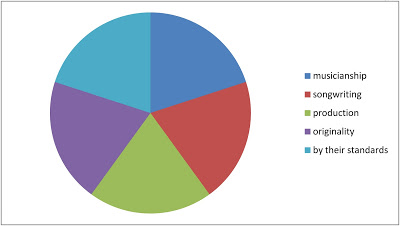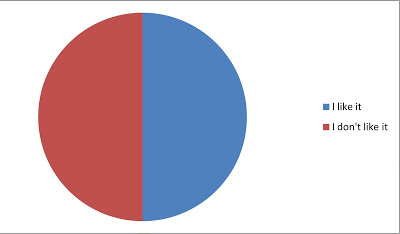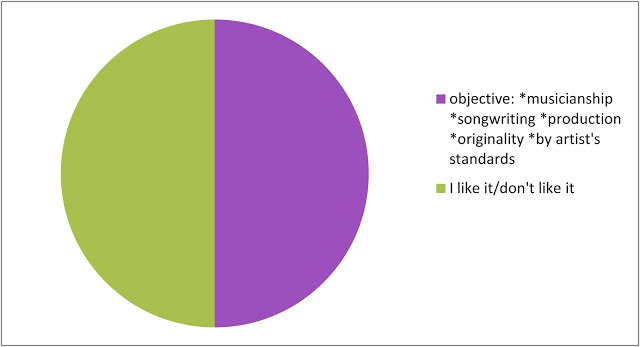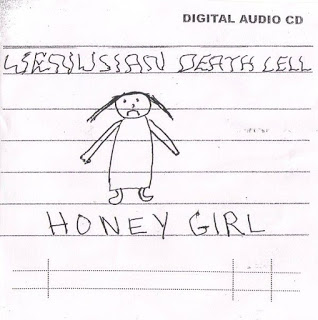
The dying man glows with sickness in his mildewy-looking bed, the light seeming to emanate from where he sits, crammed into the airless, box-like room. He signs his will while his friend looks on intently with concern and restrained grief.
The artist who painted Thomas Braithwaite of Ambleside making his will in 1607 may not have been considered important enough as an artist, (still a person of relatively low social status in northern Europe, though this was starting to change with painters like Rubens and his pupil Anthony Van Dyck) to warrant signing the picture or having their name recorded at all, except perhaps in the household accounts – but they were important as a witness, and the painting is itself a kind of legal document, although it’s more than that too. The great enemy of the Elizabethan and Jacobean ages wasn’t death, with which most adults would have been on very familiar terms, but disorder and chaos*; and this, despite its tragic appearance, is a painting devoted to the age’s great virtue; order. Both the dying lord (an inscription records the date of his death (Thomas Braithwaite of gentry stock, died 22 December, 1607, aged 31) and his friend George Preston of Holker are identifiable to those who knew them by their likenesses and to those who didn’t, by their coats-of-arms. Biblical texts tell us that Thomas Braithwaite was a virtuous man, but so does the painting itself; this is a man who, even while he lay dying, took care of his business. His passing is tragic, but, he reassures us, it will cause only grief and not inconvenience.
*see EMW Tillyard, The Elizabethan World Picture, Pelican Books, 1972, p.24
We talk about religious faith now as a kind of choice as much as a belief system, but for all its paranoia about atheism –and all the subsequent romanticism about that era’s new spirit of humanism – the Tudor and Stewart ages had inherited a world view in which the existence, not only of God and Heaven and Hell, but the essential hierarchy of existence, was more or less taken for granted. We may differentiate arbitrarily now between religion and superstition, but for the people in these cramped and airless paintings there was no real contradiction between, say Christianity and astrology, because in accepting without exception the primacy of god the creator, it all works out in the end – everything that has ever existed and everything that will ever exist, already exists. Perhaps human beings aren’t supposed to divine the future, but God has written it and the signs – comets, unseasonal weather, the movement of the stars and the behaviour of animals – are there to be read and interpreted by anyone with the nerve to do so.
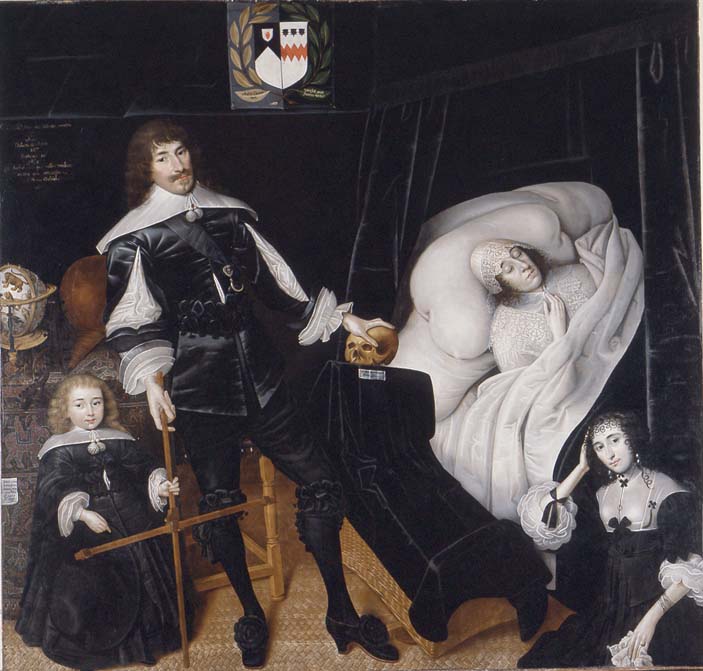
In an off-kilter, vertigo-inducing room that seems almost to unfurl outwards from the skull at its centre, an illogical space hung with black velvet, a man and his son, looking outwards, but not at us, stand by the deathbed of their wife and mother, while a glamorous young woman meets our gaze from where she sits, apparently on the floor at the foot of the bed.
There’s virtue in this painting too, but mostly this one really is about death. It’s there at the centre, where the lord’s hand sits on a skull, recalling the kind of drama which was then passing out of fashion, just as this kind of painting was. The skull, like the black-draped cradle (with its inscription that reads He who sows in flesh reaps bones), acts as a vanitas motif, focussing the viewer’s attention on the shortness of life, but also recalls the enthusiastically morbid writing of men like John Webster and Thomas Middleton. Sir Thomas and his wife had grown up in an England where plays like Middleton’s Revenger’s Tragedy often featured soliloquies over the remains of loved ones. Sir Thomas Aston is not being consumed by a desire for revenge, but his hand on the skull can’t help recalling Hamlet, or even more so, anti-heroes like Middleton’s Vindice, who opens The Revenger’s Tragedy contemplating the skull of his fiancée;
My study’s ornament, thou shell of death/once the bright face of my betrothed lady/When life and beauty naturally fill’d out/these ragged imperfections,/when two heaven-pointed diamonds were set/ in those unsightly rings – then t’was a face/so far beyond the artificial shine/of any woman’s bought complexion
The Revenger’s Tragedy, Act1 Sc 1, in Thomas Middleton, Five Plays ed. Bryan Loughrey & Neil Taylor, Penguin Books, 1988 p.73
Sir Thomas, unlike Vindice, displays the correct behaviour for a grieving man with an orphaned young son – not, the deadpan ‘stiff upper lip’ restraint of later generations of British gentlemen – though he is a dignified figure, but the kind of behaviour noted in books of etiquette like the anonymous Bachelor’s Banquet of 1603, which states that if
in the midst of this their mutual love and solace, it chanceth she dies, whereat he grieves so extremely, that he is almost beside himself with sorrow: he mourns, not only in his apparel for a show, but unfeignedly, in his very heart, and that so much, that he shuns all places of pleasure, and all company, lives solitary, and spends the time in daily complaints and moans, and bitterly bewailing the loss of so good a wife, wherein no man can justly blame him, for it is a loss worthy to be lamented.
The Bachelor’s Banquet in The Laurel Masterpieces of World Literature – Elizbethan Age, ed. Harry T. Moore, Dell Books, 1965, p.324)
It is perhaps this behaviour we should read in Sir Thomas’s sideways glance, not the hauteur of the nobleman but the remoteness of the recently bereaved. His black sash is adorned with a death’s head brooch; he and his young son (also Thomas) are to be considered men of the world; to their left a globe sits on a tapestry decorated with elephants. But all their worldly knowledge and faith is no help here; the two Astons grasp a cross staff bearing the inscription, The seas can be defined, the earth can be measured, grief is immeasurable. Given this display of intense, but restrained grief, the smiling girl – the only person who makes eye contact with us – is a strange figure, despite her beautiful mourning clothes, and it may be that she is the lady in the bed, as she looked in happier times, there to show us, and remind father and son, of what they are missing.
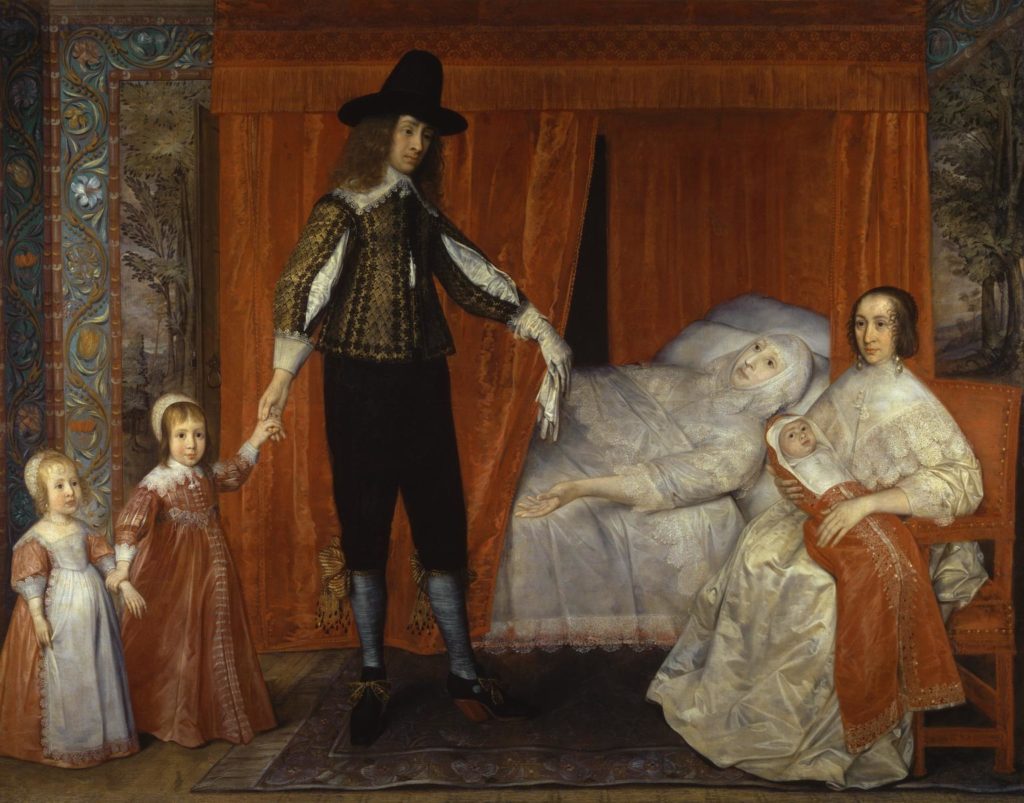
On what looks like a shallow stage opening onto a bed in a cupboard, a strangely-scaled set of figures pose stiffly, only the older child meeting our eye with a knowing smirk, although the strangely capsule-like baby seems aware of us too.
As in the Souch painting, the father figure dominates, just as they dominated their households; the household being a microcosm of the state, the state itself a microcosm of the universe.* Mr Saltonstall, despite being at the apex of a pyramid of hierarchy that allowed absolute power, does not look devoid of compassion or warmth – indeed, he has had himself depicted holding the hand of his son, who himself mirrors (in, it has to be said, a less benign-looking way) this gesture of casual mastery, holding his little sister’s wrist, demonstrating just how the links in this chain of family work. And the family is inside the kind of house familiar nowadays to the heritage tourist as a mirror of the world that produced it; mansions like overgrown doll’s houses, big on the outside, but strangely cramped and illogical inside, with peculiar little wood-panelled rooms and an ancient smell of damp.
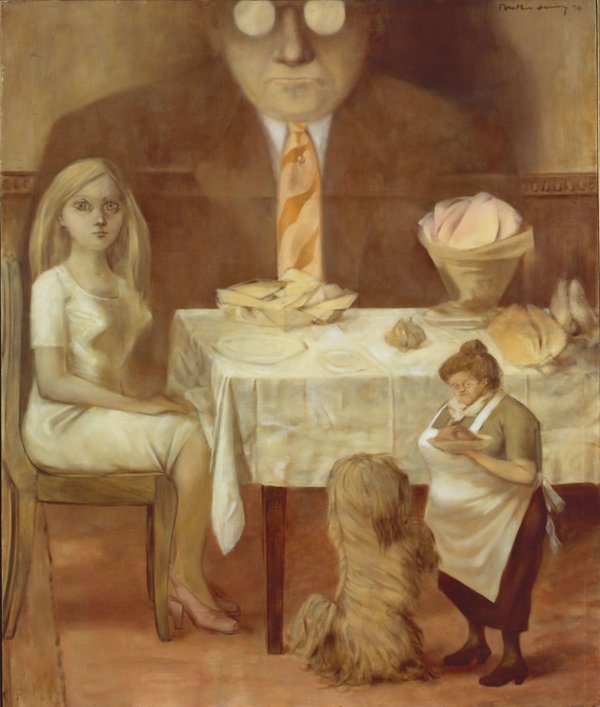
The nakedness of the power structure here isn’t subtle; and it isn’t supposed to be, because it wasn’t there to be questioned but accepted. Virtue lies in following god’s system of organisation, any suggestion to the contrary would make it an entirely different kind of painting. And indeed when painting – and painters – achieved a higher social standing in the century that followed, the messages become more subtle, only reappearing in something like this blatant form again in western art in the post-Freudian era, with a painting like Dorothea Tanning’s 1954 A Family Portrait. But Tanning’s painting is a knowing representation of a reality she was aware of but which had the force of tradition alone. Its appearance in the mid-17th century reflects the reality of the age; the truth, if not the only truth.
*EMW Tillyard, The Elizabethan World Picture, p.98-9
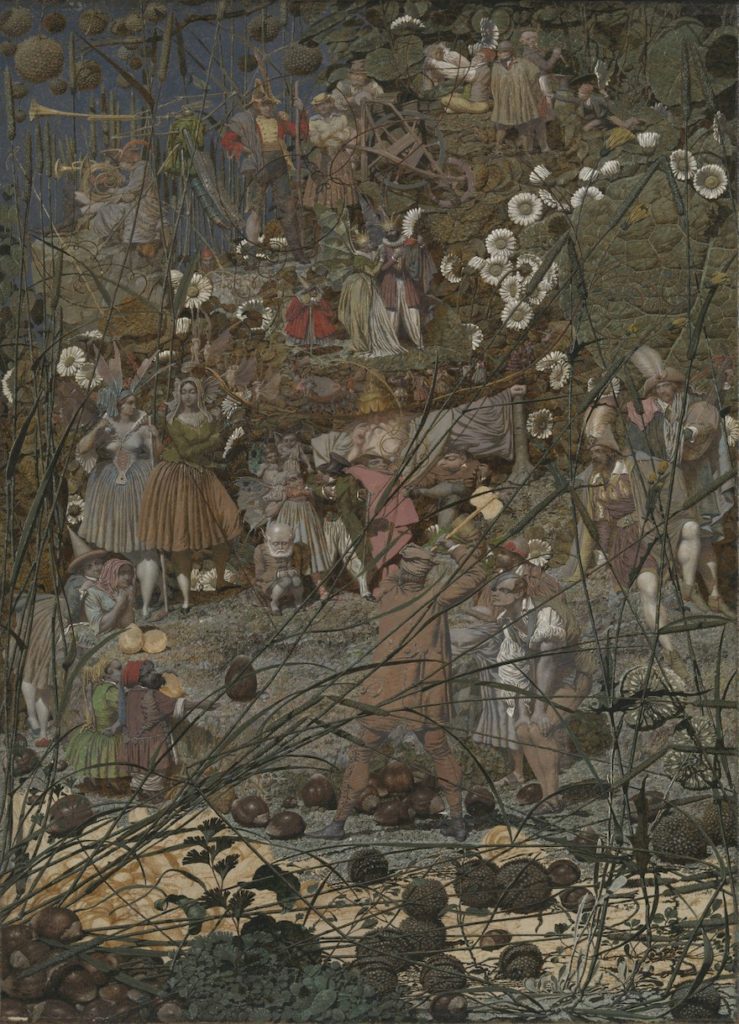
The first impression, looking at these kinds of paintings, is something like looking at fairyland through the distorting lens of Richard Dadd’s insanity centuries later; comical and disturbing, familiar and illogical. These painters of the Elizabethan and Jacobean tradition (their art died out at around the same time as Charles I did in the middle of the seventeeth century) – Souch, Des Granges, William Larkin and their many nameless contemporaries – were at the tail end of a dying tradition that would be replaced by something more spacious, gracious, modern and ‘realistic’; but ‘realistic’ is a loaded word and it’s entirely likely that this older tradition captures their world more accurately. We don’t need a time machine (though it would be nice) – a visit to almost any castle, palace or stately home is enough to confirm that the velvet curtains and classical paraphernalia of a Rubens or Van Dyck portrait does not tell the whole story of their era, even among the tiny demographic who their art served. It is a world that we would probably find dark and claustrophobic; witness the smallness of furniture, the lowness of the doorways and the dark paintings of dead ancestors, and this – regardless of the fact that it is partly due to what would later be seen as incompetence* – is what is preserved in this tradition of painting, as well as in the homes these people left behind.
* it’s a matter of fact that the average artist drawing a superhero comic in the 20th/21st century has a better grasp of mathematical perspective – and the idea of perspective at all – than even the more accomplished Elizabethan or Jacobean portrait painter
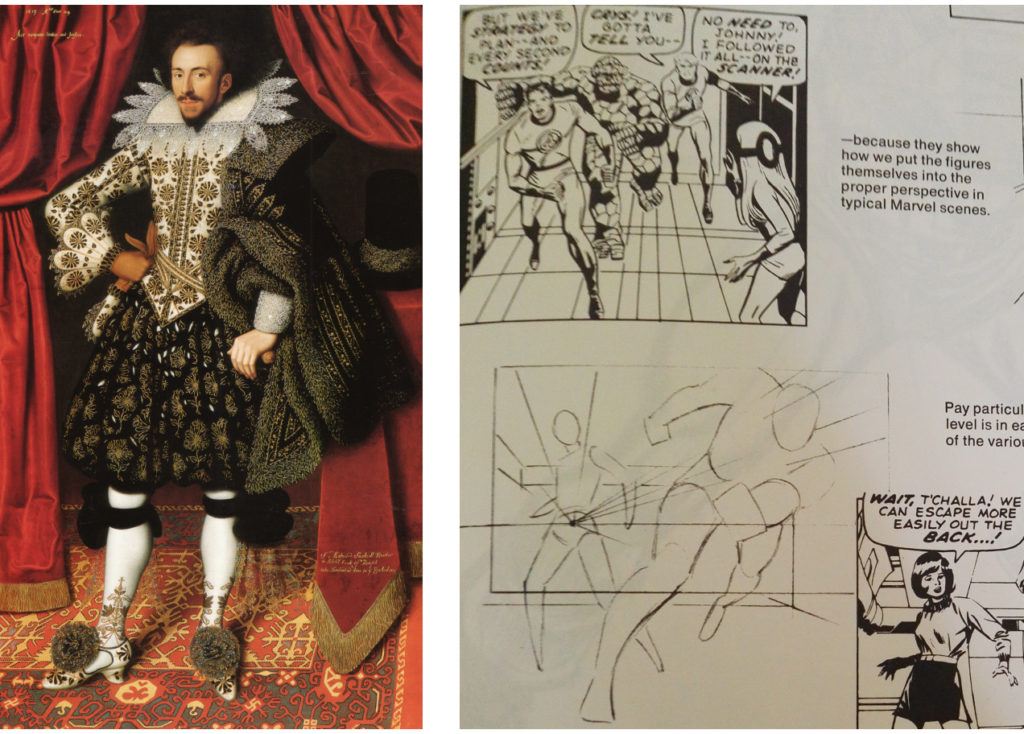
This is the kind of art that the Renaissance and its aftermath is supposed to have made obsolete – but though the word ‘art’ may owe its origin to its nature as something artificial, it also tells the truth, or a truth, regardless of its creators’ intentions. But if I’m implying that it’s realistic rather than idealistic, what does ‘realistic’ mean? Often when deriding ‘modern art’ (a meaningless term, since the art it usually refers to is often post-dated by art – like Jack Vettriano for instance – that is not considered to be ‘modern’) the assumption is that modern art is kind of aberration, a straying from a realistic norm*. But when looked at as a whole (or as much of a whole as is possible from a particular cultural viewpoint) it becomes quickly apparent that art that is ‘realistic’ in the narrowly photographic sense is a tiny island in the vast ocean of art history – and what is more, relies on ideas – such as the opposition of ‘abstract’ and ‘realistic’, that may have no currency whatsoever outside of the Western tradition.
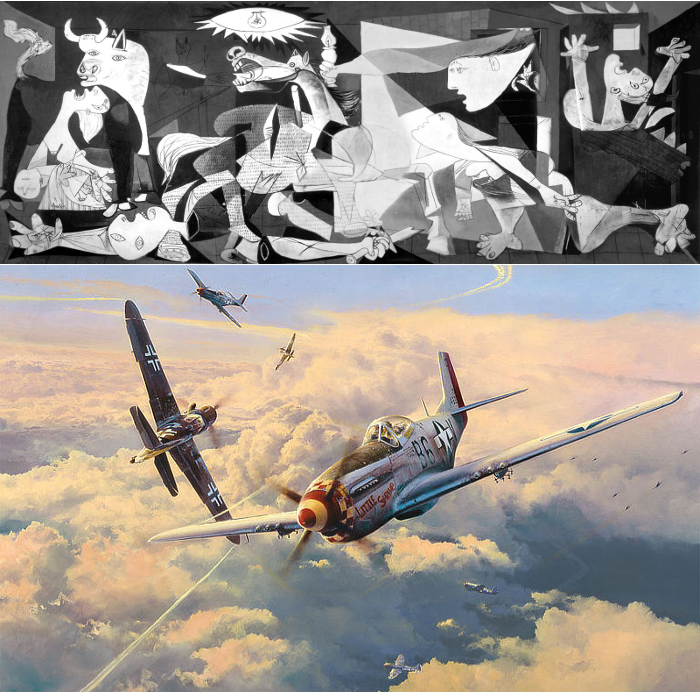
Even within Western cultures, the idea that photographic equates to experiential is debatable; despite the persistence (outside of academia) of the idea that Picasso was primarily an artist who painted noses on the wrong side of heads etc, a painting like his Guernica clearly has more in common with images of war as it was experienced in the 20th century – even vicariously through cinema and TV – than the kind of ‘war art’ that my granddad had on his walls, beautiful paintings in a tradition that lives on through artists like Robert Taylor, visions of war where the fear and panic becomes excitement and drama, an altogether easier thing to be entertained by.
*A classic example of this attitude came from Philip Larkin, who, when writing about modernism in jazz, digressed to cover all of the arts, noting
All that I am saying is that the term ‘modern’ when applied to art, has a more than chronological meaning: it denotes a quality of irresponsibility peculiar to this [ie the 20th] century… the artist has become over-concerned with his material (hence an age of technical experiment) and, in isolation, has busied himself with the two principal themes of modernism, mystification and outrage. Philip Larkin, All What Jazz, Faber & Faber, 1970, p.23
Picasso was trying to capture the feel of his century – but most of the great courtly artists of the sixteenth and seventeenth centuries – the Renaissance masters who became household names – were trying to capture something loftier, to escape the more earthy, earthly aspects of theirs, not least because they were the first generation to attain something like the status that Picasso would later attain; artists as creators and inventors, not craftsmen and recorders. And therefore that feeling of the life of the times shines through more vividly in the work of artists like John Souch and David Des Granges. The 17th century was a time when the world – even the world inhabited by the aristocracy – was far smaller than it is today in one sense, but the wider world seemed correspondingly bigger and more dangerous, but also perhaps richer or deeper, just as these people – often married by 12 or 14, learned – if they were allowed to learn – by 20, old by 40, were both smaller and bigger than we are.
This kind of painting, part portrait, part narrative, was uniquely suited to the lives it recorded, and in one late example its strengths can be contrasted with those of the baroque style that swept it away. In 1613, Nicholas Lanier was a rising star in the English court, composer of a masque for the marriage of the Earl of Somerset. Around this time he was painted by an unknown artist, in the semi-emblematic tradition of artists like John Souch. There are references – the classical statue, the pen and paper with its mysterious inscription (RE/MI/SOL/LA) that highlight that this man is more than just a lutenist, but at the same time he is most definitely that, and the artist has taken care to render realistically Lanier’s muscles as he holds the instrument; an artist yes, but a workman of sorts too. By 1632, Lanier was the Master of the King’s Music and a trusted envoy of King Charles, who even sent him on picture-buying missions. And it is this gentleman that Van Dyck captures; aloof, authoritative, not someone we can picture sweating over a difficult piece of music.

With the art of Van Dyck, the courts of Britain were to discover an ideal of aristocratic indifference which would partly define the project of British imperialism and which is, unfortunately, still with us today. But the truth of Van Dyck’s age, and those which preceded him was stranger, darker and more human. And it’s there still, in those damp-smelling big-small houses, and in the art that died with King Charles.



